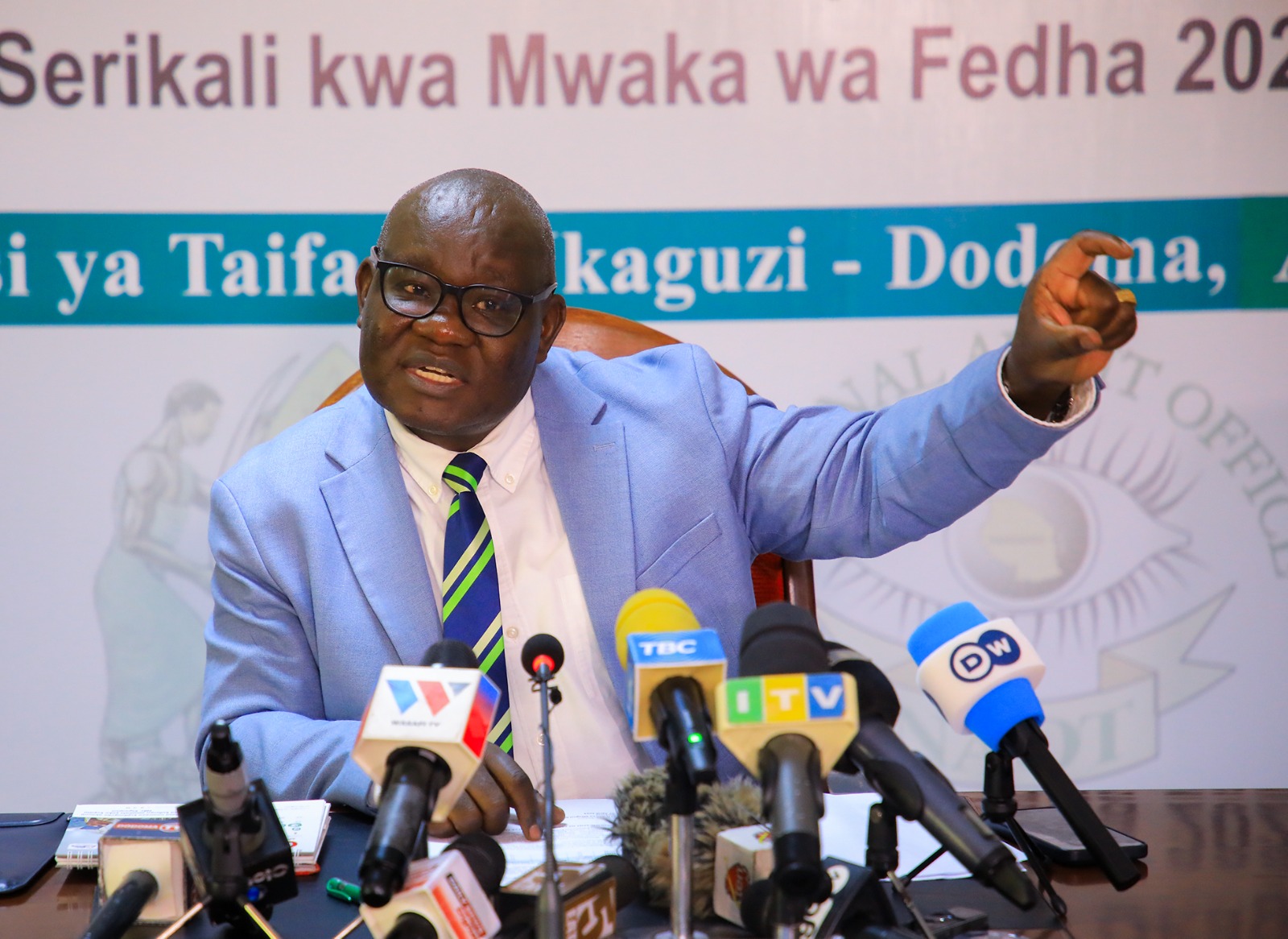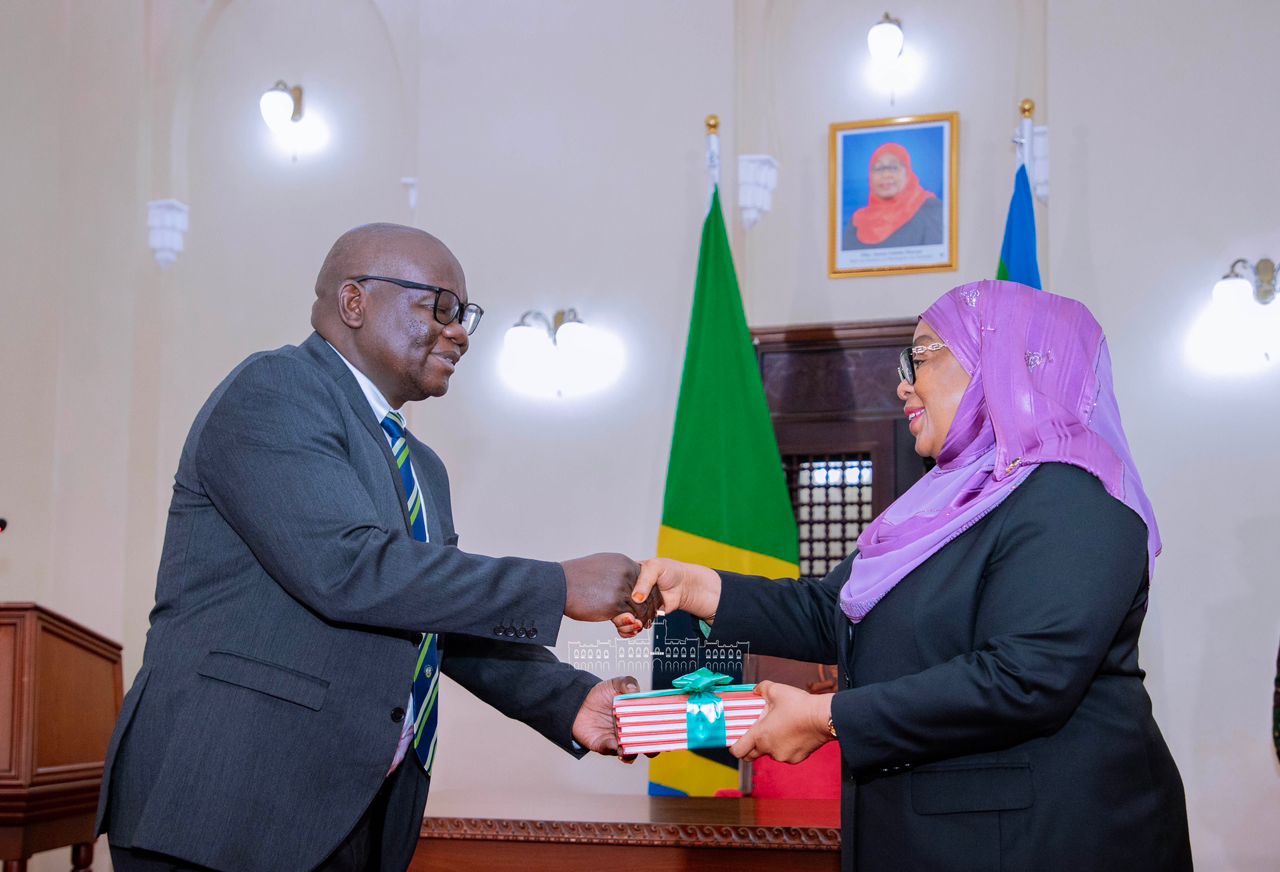CAG reveals more details, audited entities speak out

Controller and Auditor General Charles Kichere speaks when releasing his 2022/23 audit report in Dodoma on April 15, 2024. PHOTO | MERCIFUL MUNUO
What you need to know:
- The latest audit report by the Controller and Auditor General (CAG) was made public on Monday and details how a number of public institutions were accumulating losses and thus costing taxpayers dearly through subventions
- The heads of some entities came out and explained what they were doing to rectify the operational challenges highlighted by CAG Charles Kichere in his report
Dar es Salaam. The latest audit report by the Controller and Auditor General (CAG) was made public on Monday and details how a number of public institutions were accumulating losses and thus costing taxpayers dearly through subventions.
But the heads of some entities came out and explained what they were doing to rectify the operational challenges highlighted by CAG Charles Kichere in his report.
The CAG’s audit report for the 2022/23 financial year involved 215 public entities, which are profit-oriented and those that are service-oriented.
Mr Kichere’s issued 211 entities with unqualified opinions, while four were issued with qualified opinions.
In his audit on public authorities, Mr Kichere found out that 34 public sector entities reported losses or deficits for two consecutive years.
The number includes 11 profit-oriented ones, while the remaining were non-profit-oriented (service-oriented).
The list of loss-making entities includes Air Tanzania Company Limited (ATCL), which made a loss of Sh56.64 billion in 2022/23; Tanzania Telecommunications Company Limited (TTCL) which registered a loss of Sh894 million and Kariakoo Market Corporation, which closed 2022/23 with a Sh41.57 billion loss.
Tanzania Railways Corporation (TRC) reported a loss of Sh100.70 billion in 2022/23, while APC Investment Centre incurred a loss of Sh1.2 billion during the same period.
Tanoil Investment Limited incurred an operating loss of Sh76.56 billion, while Tanzania Mercantile Exchange (TMX) reported a loss of Sh720 million. Tanzania Geothermal Development Company Limited (TGDC), which is a subsidiary of Tanzania Electric Supply Company (Tanesco), recorded a loss of Sh1.24 billion.
Other loss-making entities include T-PESA Limited, Tanzania Posts Corporation (TPC) and several water and sanitation authorities.
Apart from losses, Mr Kichere’s audit also touched on the effectiveness of some key strategic public sector entities in promoting conducive business environment.
On this matter, the audit specifically analysed the role, strategies, policies and initiatives implemented by ATCL, Tanesco, Tanzania Ports Authority (TPA), National Housing Corporation (NHC) and Export Processing Zone Authority (EPZA).
“I identified scope for operational improvement in five out of 23 strategic public entities reviewed, namely ATCL, Tanesco, TPA, NHC, and EPZA,” Mr Kichere says in his report.
In his audit of Tanesco’s operating efficiency, the CAG says he identified the power utility body’s failure to settle contractors’ claims amounting to Sh240.28 billion.
He says while a total of Sh331.19 billion was to be released for the National Grid Stabilisation Projects implementation, Tanesco managed to avail onlySh90.91 billion, leaving a deficit of Sh240.28 billion.
“The failure to settle the contractors’ claims on time was largely attributed to lack of funds as the Government, through Ministry of Energy, had not released the required funds,” says Mr Kichere, emphasising the need to pay contractors on time to avoid a risk of accumulating interests that might increase project cost and delay in completion of the projects.
Mr Kichere also notes that delays in resolving three disputes between Tanesco and Songas related to charges amounting to Sh109.07 billion could end with costly outcomes.
He says while there is a possibility of extending the 20-year Power Purchase Agreement between Tanesco and Songas which expires in October 2024, the accumulation of unresolved disputes complicates the contract’s conclusion by potentially necessitating a forced extension to allow for dispute resolution.
“I recommend that Tanesco involve Attorney General’s Office to interpret clauses of the contracts/agreements that provides Songas the right to charge sinking charges and handle disputes in accordance with contract terms.”
In his audit report, Mr Kichere also notes several other operational inefficiencies at Tanesco, including the unusual replacement of 108,088 electricity meters in shorter periods and payments of $10.16 million to a contractor engaged for design, installation, implementation, training and commissioning of Corporate Management System (CMS) and Supporting Infrastructure without the works performed being certified by the Consultant.
But Tanesco spokesperson Kenneth Boymanda said on Monday the power utility firm would prepare detailed responses to issues raised by the CAG.
“As Tanesco, we will prepare responses to all the issues as raised by the CAG. This is all that I can say for now.”
On the operations of TPA, Mr Kichere notes that the ports’ body terminated projects with a total value of Sh26.68 billion that were already paid for in full which were carried forward from previous years and classified as work in progress.
The decision to terminate the projects, Mr Kichere says, was based on the TPA’s assessment of their viability after the authority (TPA) realised that there would be no value for money in continuing with them.
Among others, Mr Kichere also questions the implementation of plans to elevate port productivity and optimizing service delivery as outlined in the TPA’s Corporate Strategic Plan of 2021/22 to 2025/26.
TPA says on the right path
In response to some of the queries raised by the CAG, TPA Director General Plasduce Mbossa said on Monday that during the past three years, the port’s body has implemented several strategic interventions that are meant to boost performance in line with aspirations of President Samia Suluhu Hassan.
The implemented issues include completion of a significant percentage of an ICT project dubbed as ‘Enterprise Resource Planning (ERP)’ which is used to prepare and store financial information and integrate the activities of various departments in carrying out daily duties.
The system connects all key departments, such as Finance, Human Resources, Procurement and others.
“As a result of the completion of this system, there has been efficiency in the preparation and issuance of financial reports for the TPA to receive a clean audit opinion for two consecutive years from the CAG,” Mr Mbossa said
He said it was also due to the use of the system that TPA has received an award for best financial reporting from the National Board of Accountants and Auditors (NBAA).
“Furthermore, the system has increased efficiency in controlling financial losses, timely preparation of various reports, and management of financial documents and institutional resources,” said Mr Mbossa, noting that it was due to improved revenue collection systems have saw TPA increasing revenue collection by 27 percent in the fiscal year 2022/2023 compared to the previous fiscal year.
He said there has also been an increased cargo handling capacity at Tanzania’s ports, with a significant increase in both the number of ships and cargo.
“In the fiscal year 2022/2023, the number of ships serviced by TPA ports increased to 4,762 from 4,160, an average increase of 13.9 percent per year….Regarding cargo handling, the volume of cargo handled was 27.8 million tons, representing an average increase of 21.7 percent compared to previous years,” said Mr Mbossa.
TRC says the future is promising
Responding to the CAG’s findings of a Sh100.7 billion loss in 2022/23, TRC Director General Masanja Kadogosa said the future was promising, considering that the reported loss was itself a drop from the Sh190.01 billion that was reported during the 2021/22 fiscal year.
He said it was equally important to note that a huge chunk of the reported loss was with regard to the ongoing investments that come in the form of construction of the Standard Gauge Railway (SGR).
“Almost 70 percent of the loss is associated with SGR so we will continue to record losses until construction of SGR is fully finalised. The only thing I can assure you is that, once SGR starts operating the loss will start going down slowly and finally, we will actually break even and build up,” he said.
ATCL, NHC and EPZA on spotlight
Though there was no immediate reaction from ATCL, NHC and EPZA, the CAG’s report castigates the three strategic institutions for what looks like operational inefficiencies.
ATCL is blamed for its limited expansion of international flights while the NHC appears in the negative light for putting on hold seven projects worth Sh55.86 billion.
The EPZA, Mr Kichere says, spent some Sh2.56 billion at its Mtwara Free Port project construction since October 27, 2020. However, the project has remained a white elephant since then.
“During my visit to the project on 2 October 2023 I found that there were no investors in the Mtwara Free Port Zone…This was attributed to inadequate gas activities in Mtwara Region as anticipated by EPZA,” the report says.
Additional reporting by Hellen Nachilongo and Juma Issihaka





